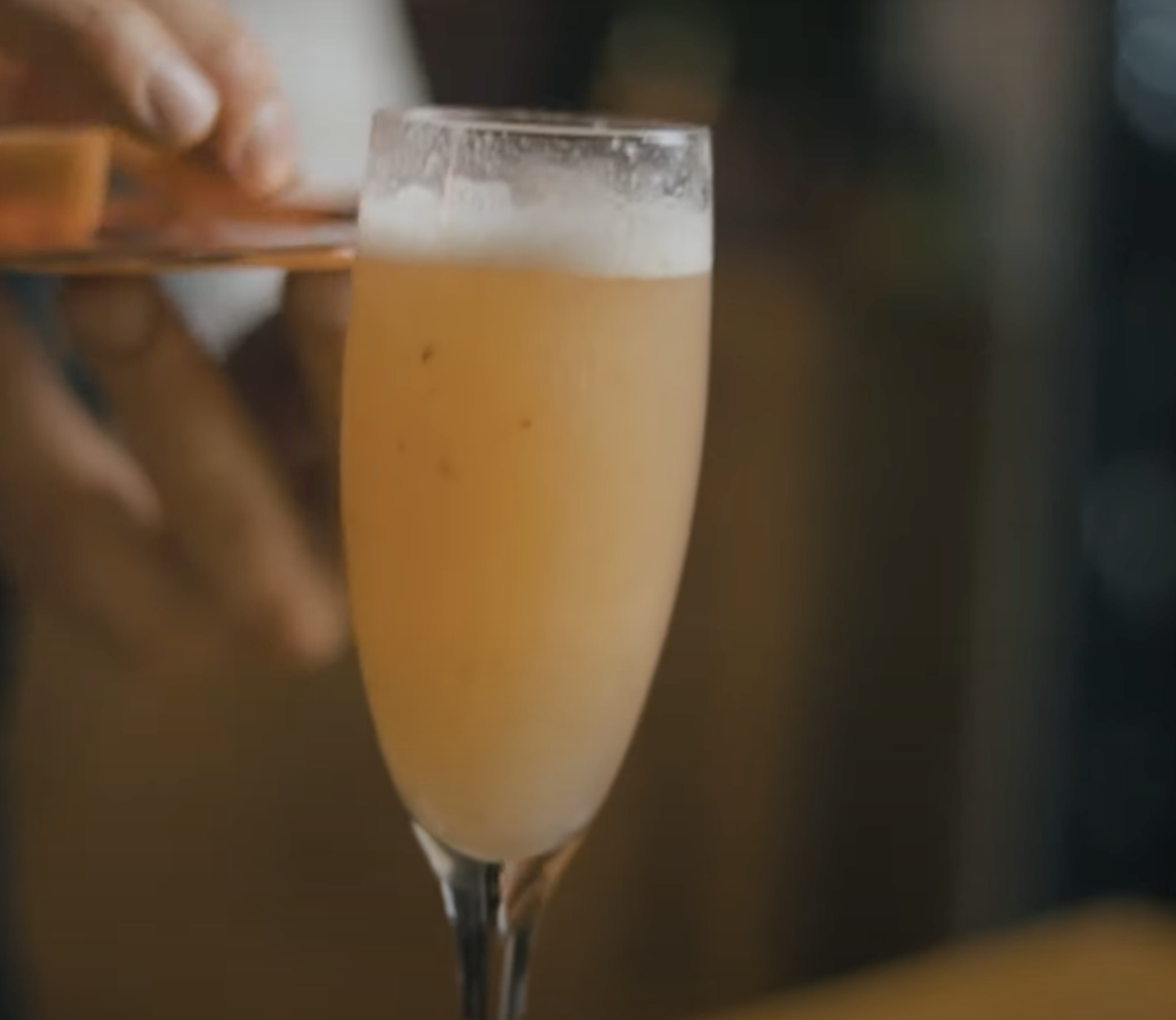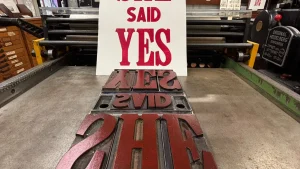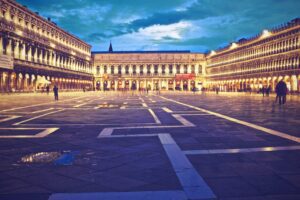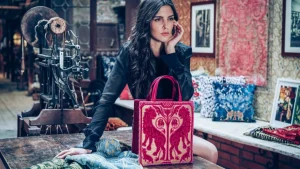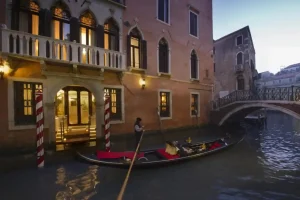🍑 Harry’s Bar Venice — The Legendary Home of the Bellini, Carpaccio, and Countless Stories
Every city has its legends. In Venice, one of them serves cocktails.
Nestled just steps from St. Mark’s Basilica, Harry’s Bar isn’t just a place to grab a drink — it’s a living time capsule of Venetian elegance, invention, and heart. It’s where the Bellini was born, where Carpaccio was created, and where half of literary history seems to have spent its evenings complaining about deadlines.
Since 1931, this cozy corner of Venice has welcomed Hemingway, Capote, Orson Welles, Charlie Chaplin, Peggy Guggenheim — and probably someone you secretly wish you were. But behind the fame lies a story so humble and human it could only have happened here, in a city that floats on charm and chance.
🍸 How Harry’s Bar Was Born — A Story of Friendship and Luck
The tale begins, as many Venetian tales do, with a stranded American and a generous bartender.
In the late 1920s, a young American named Harry Pickering found himself stuck in Venice. His family, exasperated by his drinking, had cut him off — leaving him broke, embarrassed, and thirsty. Enter Giuseppe Cipriani, then a barman at the Hotel Europa. Cipriani quietly lent him 10,000 lire — a small fortune at the time — so Harry could get back on his feet.
Years passed. Then one day in 1931, Pickering walked back through the door — sober, smiling, and carrying 40,000 lire. He handed 30,000 to Cipriani, saying, “For you — to open a bar.”
And so he did. Out of gratitude, Giuseppe named it Harry’s Bar.
That act of kindness became the foundation for one of the most famous institutions in the world — a place where generosity, not glamour, was the real secret ingredient.
🪞 The Charm of Harry’s Bar — Understated Luxury
Walk past the Grand Canal, slip down a quiet calle near Piazza San Marco, and you might miss it. The building is small, almost shy — no flashing lights, no velvet ropes. But step inside, and time slows down.
There’s warm wood paneling, soft lighting, crisp white linens, and waiters in white jackets moving with old-world grace. The clink of glass and the hum of conversation sound the same today as they did in 1931. Nothing feels forced. Everything feels right.
In 2001, Italy’s Ministry of Cultural Heritage declared Harry’s Bar a national landmark — “a witness to the twentieth century in Venice.” Which, translated loosely, means: this place is part of who we are.
🥂 The Birth of the Bellini — Art in a Glass
Legend has it that in the summer of 1948, Giuseppe Cipriani was admiring a painting by Venetian Renaissance artist Giovanni Bellini when inspiration struck. The pinkish glow of a saint’s toga reminded him of the perfect color for a drink — delicate, radiant, and joyful.
He mixed puréed white peaches with chilled Prosecco from the nearby Prosecco Hills and created the Bellini.
Simple. Beautiful. Completely Venetian.
The cocktail became an instant hit. By the 1950s, it was the toast of New York, Paris, and anywhere elegance met excess. But nowhere does it taste quite like it does here, at Harry’s Bar, where each Bellini feels like a small poem — fizzy, romantic, and fleeting.
Fun fact: fresh white peaches are only available in season, so if you visit in winter, you’ll get the off-menu secret — frozen purée made from the summer’s best harvest. Same flavor, less wait. That’s Venetian efficiency for you.
🍖 The Birth of Carpaccio — Art on a Plate
A few years later, another invention emerged from the same small kitchen. A Venetian countess, Amalia Nani Mocenigo, came to the bar under doctor’s orders: she could only eat raw meat. Rather than serve something dull, Cipriani thinly sliced fresh beef, drizzled it with a creamy mustard-mayonnaise sauce, and topped it with shaved Parmesan.
The result was not only delicious but — in true Venetian fashion — artistic. The vivid reds and yellows reminded Cipriani of the paintings of Vittore Carpaccio, another Venetian master. Thus, Carpaccio was born.
Today, “Carpaccio” exists in every culinary language — tuna, zucchini, even pineapple. But the original lives here, quietly plated at Harry’s Bar, a dish born not from opulence, but from empathy.
👔 Enter Arrigo Cipriani — The Philosopher of Hospitality
Giuseppe’s son, Arrigo Cipriani (the Italian version of “Harry”), grew up among clinking glasses and laughter. When he took over the bar, he didn’t try to reinvent it — he preserved it.
Arrigo was charming, sharp, and philosophical — more professor than restaurateur. He believed that simplicity was the highest form of luxury. “At Harry’s Bar,” he said, “nothing changes, because we are already what others try to become.”
Under his watch, the Cipriani name became synonymous with refined hospitality — expanding from Venice to New York, Hong Kong, Ibiza, and beyond. But Arrigo never let fame dilute the soul of his father’s bar. The recipes stayed sacred. The service stayed human. The waiters stayed forever loyal.
He once refused to install a credit card machine, saying, “If you can’t trust someone to pay their bill, you shouldn’t serve them.” Classic Arrigo: elegance with a twinkle of rebellion.
📖 Famous Guests, Forgotten Nights
Harry’s Bar has always been discreet about its clientele — part of its charm. But a few stories have escaped the walls.
- Ernest Hemingway drank here so often that the staff nicknamed his corner “Hemingway’s office.” He even immortalized the bar in his novel Across the River and Into the Trees.
- Truman Capote allegedly wrote a short story on the back of a napkin after three Bellinis — though no one remembers where the napkin went (possibly into the lagoon, or the legend).
- Orson Welles was known to order two Carpaccios at once — one to eat, one to “think about.”
- Woody Allen once pitched a film idea to Arrigo over lunch, only to abandon it halfway through dessert.
But the best stories aren’t the celebrity ones. They’re the anniversaries quietly toasted in the corner. The proposals whispered over Bellinis. The strangers who met here once and returned every year after. Harry’s Bar doesn’t just serve cocktails — it collects lives.
🌍 The Cipriani Legacy Today
Today, the Cipriani empire stretches across continents — from the glittering Cipriani Hotel in Venice’s Giudecca to luxury dining rooms in New York, Miami, Dubai, and Monte Carlo. Yet every one of them carries that same DNA: simplicity, generosity, and a love for people over pretension.
Arrigo’s son, Giuseppe Cipriani Jr., now leads the brand, ensuring that what began as a small act of friendship in 1931 continues to inspire the world’s finest hospitality nearly a century later.
🍸 Visiting Harry’s Bar Today
When you visit, don’t expect space — expect soul. The bar is tiny, the menu is classic, and yes, the Bellini costs more than your lunch. But you’re not just paying for a drink. You’re buying a sip of history.
Stand at the bar where Hemingway leaned. Order a Bellini. Watch the peach purée swirl into the Prosecco like the Venetian sunset itself. For a moment, the noise of the world disappears. You’re part of something timeless.
And if you’re lucky, you might catch the faint echo of laughter from ghosts who once sat exactly where you are — sipping, dreaming, and falling a little more in love with Venice.
💡 TLV Tip: Make It a Venetian Evening to Remember
After your Bellini, continue the magic:
- Take a private gondola ride at sunset — it’s cliché for a reason.
- Enjoy a Cicchetti & Wine Tour for a true taste of Venetian life.
- Catch a Vivaldi concert nearby and toast the night with another Bellini (because moderation is overrated in Venice).
🎇 Final Toast
Harry’s Bar isn’t just a bar — it’s Venice distilled into a single room. A place born from kindness, elevated by art, and immortalized by those who walked through its doors with curiosity and courage.
From a penniless American and a generous bartender to the global Cipriani legacy, it’s proof that hospitality, at its best, is a love story — one that begins with “Can I get you a drink?”
🍸 Explore More Venetian Stories with Tour Leader Venice
Next time you raise a Bellini, remember: it all started here — with friendship, imagination, and a little splash of peach.

